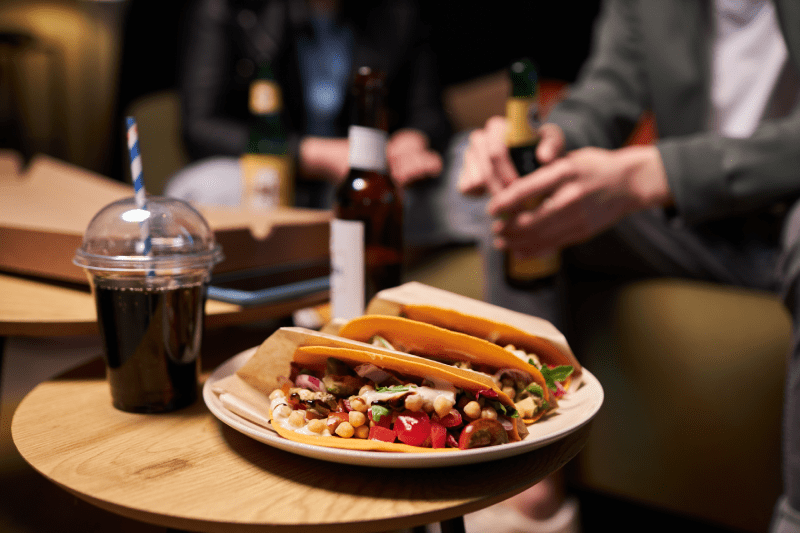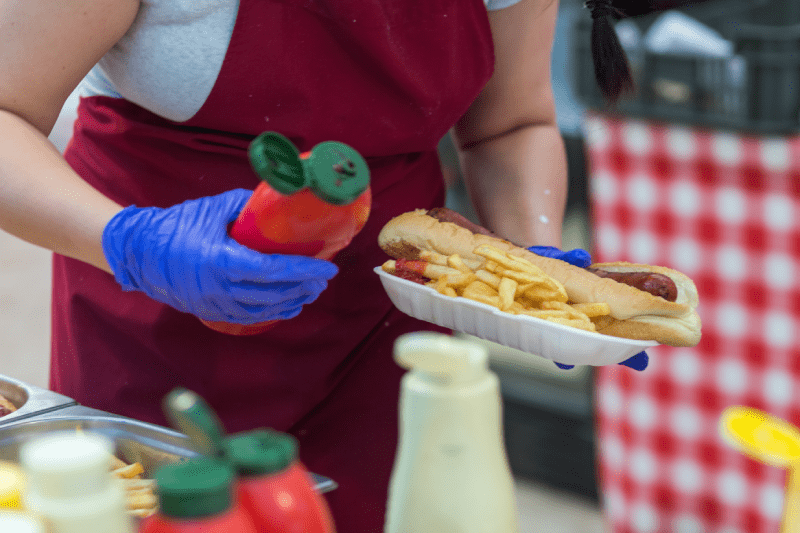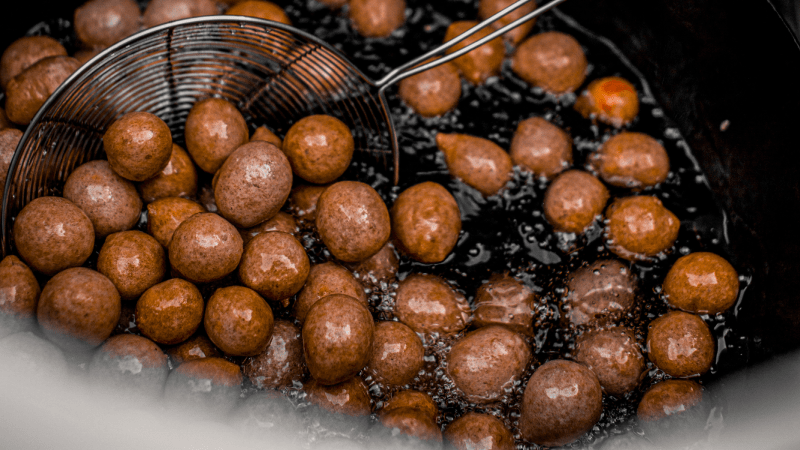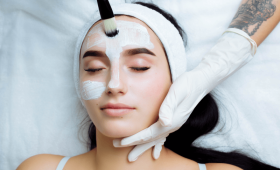What is Emotional Hunger?
Emotional hunger is the uncontrolled urge to eat that arises to fill an emotional void or discomfort, rather than a physical need. This condition is usually triggered by intense emotions such as boredom, stress, anxiety, sadness, or loneliness. The person uses food as a coping mechanism, a temporary means of relief, or an emotional anesthetic. This type of eating often results in feelings of guilt and shame, leading to a vicious cycle that can become the main source of long-term weight problems and psychological distress.
How is it Different from Physical Hunger?
Physical hunger develops gradually, manifests with signs like stomach rumbling, and can be patiently waited out; satisfaction is achieved with a reasonable portion. Emotional hunger, however, arrives suddenly and intensely, directing the person immediately to specific foods (often called comfort foods), and brings regret instead of a feeling of fullness. While physical hunger doesn’t result in guilt, the act of emotional eating makes the person feel worse afterwards. Understanding this fundamental difference is the first and most crucial step in controlling your eating behavior.

What are the Triggers of Emotional Hunger?
The factors that trigger emotional hunger can vary from person to person, but the most common ones are stress, work pressure, relationship problems, loneliness, boredom, fatigue, and low self-esteem. Sometimes an event (for example, an argument with the boss) or sometimes a general state (long-term depression) can be a trigger. When these triggers create an intense and negative emotional reaction, the individual automatically resorts to eating. Recognizing these triggers by keeping a diary is vital to breaking the cycle.
The Relationship Between Stress and Emotional Eating
Stress causes the release of the stress hormone called cortisol in our body. Cortisol typically increases appetite to support the “fight or flight” response, especially fueling the tendency toward high-sugar and high-fat foods. A person under chronic stress subconsciously begins to believe that these “comfort” foods will lower their stress level. However, this is merely temporary relief and does not eliminate the source of stress. This vicious cycle causes the habit of emotional eating to continue even when stress decreases.
Common Examples of Emotional Eating
Emotional eating is often associated with foods that are high in carbohydrates, fat, and sugar, and can be consumed quickly. Examples include unconsciously finishing a large bag of chips, consuming an entire tub of ice cream in one sitting, or attacking the first sugary item in the kitchen during a moment of stress. This situation is characterized by the person consuming quantities or types they wouldn’t normally eat, in a very short time, and usually with distraction (while watching TV or working). Such examples indicate that the person has lost control over food.
How to Understand Emotional Hunger?
The surest way to understand emotional hunger is to ask yourself a few simple questions when the sudden urge to eat arises. “Did this hunger come suddenly or did it build up slowly?”, “Do I want to eat a specific food or just anything?”, and most importantly, “When was the last time I ate, and what did I eat?”. If you don’t feel a physical emptiness in your stomach and all you want is a bar of chocolate, you are probably trying to meet an emotional need. This moment of awareness is key to breaking the automatic response.
How Does the Emotional Eating Cycle Work?
The emotional eating cycle usually begins with an emotional trigger (e.g., disappointment). This trigger creates intense discomfort, and the person turns to food to suppress this feeling. When food is consumed, a brief sense of relief and pleasure is felt. However, this pleasure quickly turns into feelings of regret, guilt, and failure. These negative emotions create more stress, leading back to the beginning of the cycle, which is a new trigger for the next emotional eating attack. This cycle can be difficult to break without professional help.
The Importance of Keeping a Food Diary
A food diary is a fundamental tool in the fight against emotional hunger. This diary requires you to record not only what you ate, but also where you were, who you were with, and most importantly, how you were feeling at the time. Noting your emotions right before eating allows you to see which emotional states are driving you to eat. By doing this, you can bring the unconscious connection between emotional triggers and the act of eating to a conscious level and develop alternative strategies to interrupt the cycle.
Filling the Emotional Void with Food
Many people try to temporarily substitute the love, happiness, or satisfaction missing in their lives with food. This can often be a habit carried over from childhood; for example, being comforted with sugar when upset. However, food cannot fill genuine emotional voids; on the contrary, it deepens the emptiness with the subsequent feeling of guilt. To cope with this void, the person needs to stop using food and discover what they truly need (talking to a friend, taking up a hobby, setting boundaries) and meet these needs in healthy ways.
The Feeling of Being Stuck and Eating
Feeling emotionally overwhelmed, stuck, or helpless are strong triggers for emotional eating. While the person is crushed under the weight of unsolved problems, the act of eating offers a temporary illusion of control or an escape from inaction. Food often turns into a “break” or a “reward,” helping the person temporarily distract their mind from real problems. The way to overcome this feeling of being stuck is to start solving problems with small steps or to do mindfulness exercises that will alleviate the emotional burden.
Mindfulness and Emotional Hunger
Mindfulness involves approaching the act of eating with attention and without judgment. When an emotional hunger attack comes, instead of rushing to eat, the person stops and notices the feeling they are experiencing, the sensations in their body (heartbeat, tension). While eating, they focus on the taste, smell, and texture of each bite, slowing down the pace of eating. This increases the pleasure derived from food while helping the person better perceive satiety signals, thus breaking the automated emotional eating response.
First Steps to Cope with Emotional Hunger
Coping begins with acceptance. The first step is to stop when you realize your eating is emotional and apply the rule of waiting 30 minutes. During this waiting period, you will often see that the urge to eat decreases or passes. It is important to fill this break with an alternative action that meets your emotional need (going for a walk, listening to music, calling a friend). This simple waiting strategy breaks the automatic response and creates an opportunity to make a conscious choice.
Developing Healthy Alternatives
Prepare your list of healthy alternatives that you can turn to instead of food when you feel emotional hunger. These alternatives should satisfy you emotionally and ideally involve physical activity or social interaction. Examples include a stretching routine during moments of tension, a video call when feeling lonely, or learning a new language when bored. Pairing these alternatives with your emotional triggers makes it easier to automatically gravitate towards the right coping method and reduces the urge to eat.

When is Professional Support Necessary?
If the habit of emotional eating has begun to negatively affect your daily life, work performance, or relationships, or if this situation constantly sabotages your weight loss efforts, professional support is mandatory. A dietitian will adjust your nutrition based on your physical needs, while a therapist or psychologist will help you develop healthy coping mechanisms by getting to the root of the emotional triggers. Remember, seeking professional help is not a weakness but the most important sign of responsibility you show to yourself.
Advanced Treatments in the Fight Against Obesity
When the emotional hunger cycle is not broken or leads to advanced weight problems, advanced treatments may come onto the agenda to improve quality of life and reduce health risks. These treatments include the Gastric Balloon, which temporarily restricts stomach volume to increase the feeling of fullness, and Gastric Botox, which slows down the contraction of stomach muscles to prolong the emptying time. These interventions offer strong initial support in controlling portions and balancing appetite, giving time for the psychological process in the fight against emotional eating.
What is Gastric Balloon Treatment and How is it Applied?
Gastric balloon treatment is a non-surgical, endoscopic method involving a soft, inflatable silicone device placed inside the stomach. The balloon occupies a portion of the stomach volume, allowing the person to feel full and satisfied with much less food. The procedure usually takes 30 minutes and is performed under light sedation. The balloon remains in the stomach for the duration of the person’s weight loss goal (typically 6 to 12 months) and is then removed endoscopically again. This method offers a significant time frame for acquiring healthy eating habits.
Gastric Botox Application and Advantages
Gastric botox is another non-surgical and endoscopic procedure involving the injection of botulinum toxin into specific areas of the stomach wall. This toxin temporarily reduces the strength and speed of muscle contractions in the stomach. Since the stomach emptying time is prolonged, the person feels full for a long time and gets hungry less often. This situation greatly helps reduce emotional eating crises and frequent snacking habits. The procedure takes about 15-20 minutes, and its effect lasts for an average of 4 to 6 months, during which time the person can adapt to a new eating regimen.
How Do These Treatments Help with Emotional Hunger?
Procedures like the gastric balloon and gastric botox help by managing the physical effects of emotional hunger. Even during moments of emotional hunger, the physical fullness of the stomach or the slowing of the emptying rate makes it physically difficult for the person to consume large portions. This gives the individual critical time to analyze the emotional trigger instead of rushing to eat. When combined with psychological support, these treatments become a much more powerful tool for breaking the emotional eating cycle and achieving sustainable weight control.
Why is Turkey a Leader in Medical Tourism?
Turkey has rapidly risen in global medical tourism with its high-quality health services, modern hospitals, and competitive prices. Major cities like Istanbul and Izmir, in particular, host internationally accredited health facilities and expert, experienced doctors. Furthermore, thanks to its geographical location, historical richness, and cultural hospitality, patients find the opportunity to combine their treatment with a comfortable vacation experience, which contributes positively to the recovery process.
How Does the Treatment Process Start in Turkey?
Starting a treatment like gastric balloon or botox in Turkey is easily managed through international patient departments. First, the patient provides information about their current health status, BMI (Body Mass Index), and goals. Then, a medical tourism company like Cure Holiday matches them with the appropriate doctor and hospital and organizes the entire process. This process covers flights, accommodation, hospital appointments, and interpreting services. Treatment begins upon the patient’s arrival in Turkey, and the entire organization is meticulously followed by a professional team.
International Standards of Hospitals in Turkey
Many private hospitals in Turkey are accredited by prestigious international organizations such as the Joint Commission International (JCI). These accreditations indicate that the hospitals meet the highest level of requirements in terms of medical quality, patient safety, and ethical standards. These facilities serving medical tourism are equipped with state-of-the-art medical devices and provide services in luxurious and hygienic conditions that prioritize patient comfort. This is a great source of confidence for international patients.
Reliable Treatment with Expert Staff
Turkey has internationally recognized and highly experienced specialist doctors, especially in the fields of obesity and aesthetic surgery. Turkish physicians are professionals who have received Western-standard education, frequently attend international congresses, and apply up-to-date treatment methods. Intermediary institutions like Cure Holiday ensure that patients work only with the best, most experienced, and reliable surgeons, maximizing the success and safety of the treatment process.
Treatment Opportunities and Cost-Effectiveness in Turkey
The biggest advantage of healthcare services in Turkey is that they are much more affordable compared to the same quality treatments in European and North American countries. This cost-effectiveness stems from low general operating expenses and government incentives, which does not mean quality is compromised. This opportunity allows patients to opt for comprehensive packages covering not only the medical intervention but also additional services such as accommodation, transportation, and post-treatment care.
Post-Treatment Follow-up and Support Services
Procedures like the gastric balloon or botox are the beginning of a transition to a new lifestyle. Successful clinics in Turkey and Cure Holiday do not leave patients alone after treatment. Remote follow-up services are offered through dietitians and coordinators after discharge. This follow-up is an important supportive process that helps the patient adapt to the new diet, resolve potential issues, and permanently change emotional eating habits.
Quality and Affordability in Turkish Medical Care
The juxtaposition of high-quality standards and affordability is the core reason for Turkey’s rise in medical tourism. Turkish clinics and hospitals operate with state-of-the-art technology and boast international accreditations (like JCI). Yet, the overall treatment cost, including accommodation and transfers, remains significantly lower than in many Western countries. This makes life-changing procedures accessible to a wider international audience looking for reliable and cost-effective solutions for weight management and overall health improvement.

Getting Gastric Treatment in Istanbul
Istanbul, being a major global hub, is the epicenter of Turkey’s medical tourism. It offers specialized clinics for Gastric Balloon and Gastric Botox procedures, conveniently located near international airports. Patients benefit from the city’s robust infrastructure, excellent hotels, and the opportunity to recover in a vibrant environment that is both modern and rich in historical culture. Cure Holiday leverages Istanbul’s infrastructure to provide seamless, all-inclusive treatment experiences.
Why Choose Turkey for Weight Loss Procedures?
Choosing Turkey for weight loss procedures like the Gastric Balloon or Gastric Botox means opting for efficiency, speed, and proven expertise. Turkish doctors have performed these procedures hundreds of times, resulting in high success rates and minimized risks. The quick turnaround—often allowing patients to complete the entire process and return home within a few days—is a significant advantage, reducing time away from work and family obligations while ensuring top medical care.
International Patient Experience in Turkey
The international patient experience in Turkey is meticulously designed for comfort. Services usually include dedicated case managers, multilingual support staff, VIP transfers from the airport, and luxurious hotel stays. Hospitals often have separate international patient floors or wings, ensuring personalized attention. This comprehensive approach minimizes the stress of traveling abroad for medical treatment, allowing patients to focus solely on their recovery and the start of their new, healthy lifestyle.
Comparing Gastric Balloon vs Gastric Botox Costs
The cost of Gastric Balloon and Gastric Botox procedures in Turkey is transparent and highly competitive. While prices can vary based on the specific clinic and the all-inclusive package details, the average starting price for a Gastric Balloon treatment package is typically between €2,800 – €4,500. The Gastric Botox package is often priced lower, ranging from €1,300 – €2,200. These figures typically include the procedure, doctor fees, hospital stay, local transfers, and sometimes initial aftercare, offering excellent value compared to European rates.
The Advantages of Medical Tourism Packages
Cure Holiday specializes in all-inclusive medical tourism packages that cover every logistical detail. These packages typically include the procedure, pre-operative tests, post-operative medication, 4-5 star hotel accommodation, and all VIP airport/hospital transfers. By bundling these services, patients receive a predictable, transparent cost and avoid the hidden fees often associated with separate billing. This holistic approach significantly eases the patient’s journey, from consultation to recovery.
Discovering Turkish Hospitality and Recovery
Turkish culture is globally renowned for its deep sense of hospitality (misafirperverlik). This is reflected in the medical sector, where patients often report feeling genuinely cared for and welcomed. The recovery period is not just medical; it’s an opportunity to experience Turkish kindness, often leading to a more positive emotional state which is crucial for tackling underlying emotional hunger issues. The warmth and attention help patients feel supported during this transformative health journey.
Easy Travel and Visa Process to Turkey
Turkey offers a remarkably accessible travel experience for most international visitors. Many European, Middle Eastern, and North American passport holders can enter Turkey visa-free or obtain an e-Visa online quickly and easily. Major airlines offer direct flights to Istanbul and other key cities, making the journey seamless. This logistical ease further enhances Turkey’s appeal as a top destination for medical tourists seeking prompt and complication-free treatment options.
Reliable and Comfortable Treatment with Cure Holiday
Cure Holiday is a specialized organization in medical tourism in Turkey, offering its patients the highest standards of service. For procedures like gastric balloon and gastric botox, they cooperate only with experienced surgeons and fully equipped hospitals that have international accreditations. Cure Holiday’s core philosophy is to make the patient’s treatment not just a medical procedure but a completely stress-free, comfortable, and reliable experience, allowing the patient to focus on their new life.
Gastric Balloon Treatment Price
Gastric balloon treatment, within the comprehensive packages offered by Cure Holiday, typically ranges between approximately €2,900 and €4,200, depending on the hospital, the type of balloon, and its duration (6 or 12 months). This pricing generally includes doctor consultations, insertion and removal of the balloon, anesthesia, hospital stay, airport transfers, and Turkish-English interpreting services. Pricing in Euros ensures transparency and ease of comparison for international patients.
Gastric Botox Treatment Price
Gastric botox is a non-surgical and shorter procedure, making its cost lower. Package prices for those wishing to receive this treatment through Cure Holiday are generally around €1,450 to €2,150. This package price covers the botox application, materials used, all necessary medical tests, hospital services, and VIP transfers. Gastric botox is an ideal and economical solution for patients seeking shorter-term support and who have a lower BMI.
Cure Holiday Comprehensive Package Content
The health packages offered by Cure Holiday go beyond the medical procedure. A typical package includes the initial consultation, all hospital costs, doctor and anesthesia fees, 4 or 5-star hotel accommodation (usually 2-3 nights), all private transfers between the airport-hotel-hospital, and 24/7 personal assistant/interpreter support. This comprehensiveness provides mental comfort by ensuring the patient knows all logistical details are handled for them from the moment they step into Turkey.
Preparation for Treatment and Travel Plan
When deciding on treatment with Cure Holiday, the only thing the patient needs to do is provide basic medical documents. All remaining preparation and travel planning are managed by the Cure Holiday team. Detailed information is provided regarding what to pay attention to before treatment (diet, medication use). All appointments and accommodation reservations are organized, excluding flight tickets. This professional planning allows the patient to focus solely on their physical and emotional preparation.
Contact Cure Holiday
If you are ready to break the impact of emotional hunger on your weight control and start a new life, contacting Cure Holiday is very easy. You can request a free preliminary consultation through their website or social media channels, explain your situation and goals. Experienced patient coordinators will create a personalized treatment plan for you, provide clear price quotes in Euros, and answer all your questions about the process.


